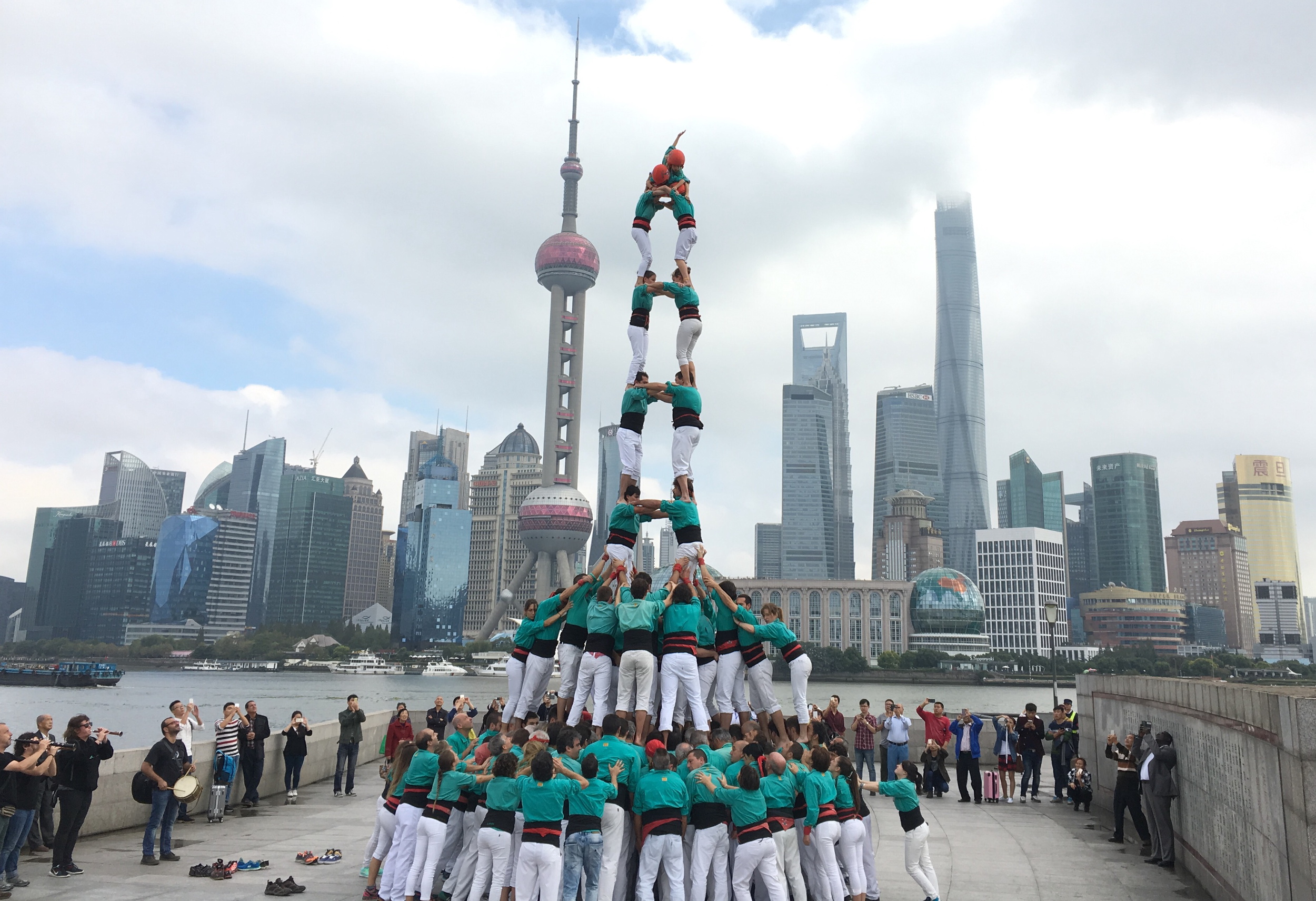‘Castellers’ celebrate 5 years as UNESCO element of Intangible Cultural Heritage of Humanity
Catalan human towers, ‘Castellers’, celebrated Monday their fifth anniversary of their recognition by UNESCO as an element of Intangible Cultural Heritage of Humanity. The ‘Castellers’ community had been awaiting the committee’s decision for years, as the candidature was first submitted in 2007. “The number of ‘Castellers’ groups has increased by 30% in the last five years, totalling 97 groups all over Catalonia”, stated ‘Castellers’ Groups Coordination president Maria Cortès, “our goal is not to reach 100 groups, but to make higher, stronger and safer ‘castells’ each time”. Cross-party list ‘Junts Pel Sí’s top member, Raül Romeva, also attended the event, as he is also a member of a group of Castellers. “Castellers teach us that things must be done well, in an organised way and to add to each other, as everybody has their role” he declared in an interview, probably in reference to the negotiations between pro-independence forces ‘Junts Pel Sí’ and CUP.

Barcelona (CNA).- It’s been five years since the UNESCO Intergovernmental Committee for the Safeguarding of Intangible Cultural Heritage recognised Catalan human towers as one of the most genuine and unique cultural practices of Europe. “The number of ‘Castellers’groups has increased by 30% in the last five years, totalling 97 groups all over Catalonia”, stated ‘Castellers’Groups Coordination president Maria Cortès, “our goal is not to reach 100 groups, but to make higher, stronger and safer ‘castells’each time”. On Monday, the ‘Castellers’community celebrated this fifth anniversary with a festive event in Barcelona. Cross-party list ‘Junts Pel Sí’s top member, Raül Romeva attended the ceremony, as he is also a member of a group of Castellers. “Castellers teach us that things must be done well, in an organised way and to add to each other, as everybody has their role”he declared in an interview, probably in reference to the negotiations between pro-independence forces ‘Junts Pel Sí’and CUP.
“There are 50% more ‘castells’ being made nowadays and they are higher, stronger and far more stable; now only 3% of the towers collapse” assured Cortès. She admitted to be proud of the fact that there are ‘Castellers’ groups emerging in different parts of the world: London, Quebec and París, to name but a few. “We have to find the best fit possible so that ‘Castellers’ are exported with the same essence and safety conditions displayed in Catalonia” she emphasised.
Catalan Minister for Culture, Ferran Mascarell, highlighted the genuine nature of ‘Castellers’ and described them as “a metaphor” for Catalonia. “It is the cultural expressions which explains, approaches and represents the most the particular development structure that Catalonia has had in social and political terms”.
“Castellers teach us that things must be done well, in an organised way and to add to each other, as everybody has their role” commented ‘Junts Pel Sí’s top member Raül Romeva, probably in reference to the negotiations between pro-independence forces ‘Junts Pel Sí’ and CUP, in an interview with Catalan journalist Mónica Terribas. Terribas asked him if the values of ‘Castellers’ could be transferred to a process of nation building. “The courage and the equilibrium are also present” in the process of building a new country. “If we do without effort what we aim to do, we won’t get through it” he warned. “There is a huge collective force and this will allow us to reach the sky or wherever we want to go”, he concluded.
‘Castellers’as an international Catalan symbol
In June 2014, the initiative "Catalans want to vote. Human towers for democracy” simultaneously displayed traditional human towers in London, Berlin, Berlin, Brussels, Geneva, Lisbon, Paris, Rome and Barcelona, as well as in 41 Catalan towns, to call for the right of self-determination. 5,000 ‘Castellers' from 71 different groups took part in the initiative, which was reported on internationally.
Besides this, ‘Castellers’ have also been displayed in the United States on several occasion and in 2011, one of the most important ‘Castellers’ groups, Castellers de Vilafranca, travelled to Mumbai on an educational trip to explore new formations and techniques.
This month, Castellers de Vilafranca displayed several towers at iconic landmarks throughout Shanghai.
A long-awaited declaration
‘Castellers’ were declared a UNESCO element of Intangible Cultural Heritage of Humanity on the 16th of November 2010 in Nairobi. Its candidature was first submitted in 2007, so the UNESCO Intergovernmental Committee for the Safeguarding of Intangible Cultural Heritage decision was long-awaited. The Committee finally recognised the values of traditional human towers and considered them one of the most genuine and unique cultural practices of Europe and an excellent example of Catalonia’s “strength, balance, values and wisdom”. In addition to the rich technical and historical elements of the ‘castells’, the candidature included the cultural values of individual and collective self-improvement, goal setting, solidarity (among members of the same group as well as with other groups) and the integration of all ages, conditions and capacities into the same project.